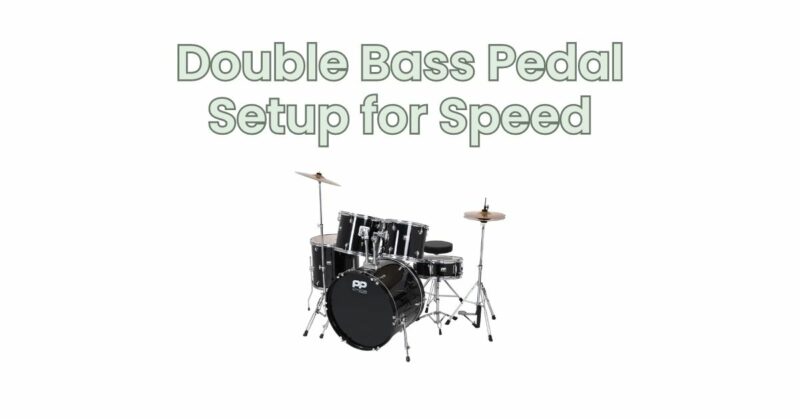When it comes to playing the drums, speed and precision are often highly sought-after skills. One of the most effective tools for achieving blistering speed and rapid-fire beats on the bass drum is a double bass pedal. However, simply having a double bass pedal isn’t enough to unlock its full potential. In this article, we will explore various techniques and setup considerations that can help drummers enhance their speed and optimize their double bass pedal setup for maximum performance.
- Pedal Choice:
Selecting the right double bass pedal is essential for achieving speed and control. Look for pedals that offer smooth, responsive action and a sturdy build quality. Different models have varying features such as adjustable tension, beater angle, and footboard length. Experiment with different options to find a pedal that suits your playing style and provides the desired level of responsiveness.
- Foot Positioning:
Proper foot positioning is crucial for speed and endurance when using a double bass pedal. Place your dominant foot on the primary pedal, positioning your heel on the heel plate and your toe on the footboard. Your non-dominant foot should rest on the slave pedal, allowing you to transfer power and control between both feet efficiently. Practice maintaining a balanced and relaxed posture to avoid unnecessary tension or strain.
- Technique:
Developing a solid technique is vital for achieving speed on a double bass pedal. There are different techniques to explore, including heel-toe, slide, and swivel techniques. The heel-toe technique involves using the ankle to alternate between heel-down strokes and toe-down strokes, creating a rapid-fire effect. The slide technique relies on sliding your foot along the footboard, generating fast and consistent strokes. The swivel technique utilizes ankle rotation to produce rapid and controlled beats. Experiment with different techniques and find the one that feels most comfortable and natural for you.
- Pedal Settings:
Adjusting the pedal settings can greatly impact your speed and control. Start by setting the spring tension to a level that feels comfortable and responsive. Too loose, and you may lose power; too tight, and you may sacrifice speed. Experiment with different tensions to find the sweet spot that suits your playing style. Additionally, adjust the beater angle to optimize the balance between power and rebound. Higher beater angles provide more power, while lower angles enhance rebound for faster strokes.
- Practice Routine:
Consistent practice is key to developing speed and precision on a double bass pedal. Incorporate dedicated exercises into your practice routine to improve your footwork and coordination. Begin with slow tempos, focusing on accuracy and control, then gradually increase the speed as your technique improves. Incorporate rudiments such as single strokes, double strokes, paradiddles, and flam exercises to enhance your limb independence and build speed gradually.
- Ankle Strength and Flexibility:
Developing ankle strength and flexibility is essential for executing fast and controlled double bass pedal patterns. Incorporate ankle-strengthening exercises into your warm-up routine, such as ankle rotations, ankle lifts, and resistance band exercises. Stretching exercises like calf stretches and ankle stretches can help improve flexibility, allowing for smoother and more fluid footwork.
Conclusion:
Unlocking the full potential of a double bass pedal requires more than just acquiring the equipment. By carefully considering pedal choice, perfecting your foot positioning, honing your technique, adjusting pedal settings, and following a dedicated practice routine, you can enhance your speed and control on the drums. Remember to start slow and gradually build up speed, focusing on accuracy and precision. With time, patience, and consistent practice, you’ll find yourself achieving new levels of speed and unleashing your full potential as a drummer.


